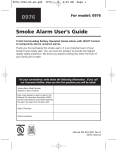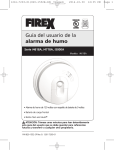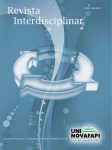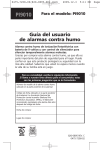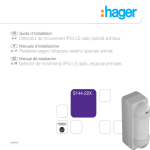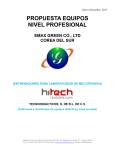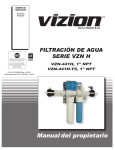Download Sealed Battery Smoke Alarm User`s Guide
Transcript
0910 For model: 0910 Smoke Alarm User’s Guide Lithium (non-replaceable sealed in) Battery-Operated Smoke Alarm with Alarm Memory and SMART HUSHTM Control to temporarily silence nuisance alarms. Thank you for purchasing this smoke alarm. It is an important part of your family’s home safety plan. You can trust this product to provide the highest quality safety protection. We know you expect nothing less when the lives of your family are at stake. For your convenience, write down the following information. If you call our Consumer Hotline, these are the first questions you will be asked. Smoke Alarm Model Number (located on back of alarm): Date Code (located on back of alarm): The National Fire Protection Association (NFPA) and the manufacturer recommend replacing this alarm ten years from the date code. Date of Purchase: Where Purchased: Manual P/N 820-0644 Rev. D 0910-7201-02 This alarm detects products of combustion using the ionization technique. It contains 0.9 microcurie of Americium 241, a radioactive material (see Section 9). Distributed under U.S. NRC License No. 32-23858-01E. Manufactured in compliance with U.S. NRC safety criteria in 10 CFR 32.27. The purchaser is exempt from any regulatory requirements. Do not try to repair the smoke alarm yourself. Refer to the instructions in Section 12 for service. IMPORTANT! READ ALL INSTRUCTIONS BEFORE INSTALLATION AND KEEP THIS MANUAL NEAR THE ALARM FOR FUTURE REFERENCE. CONTENTS OF THIS MANUAL 1 -- RECOMMENDED LOCATIONS FOR SMOKE ALARMS 2 -- LOCATIONS TO AVOID 3 -- INSTALLATION INSTRUCTIONS 4 -- OPERATION AND TESTING 5 -- NUISANCE ALARMS 6 -- MAINTENANCE 7 -- LIMITATIONS OF SMOKE ALARMS 8 -- GOOD SAFETY HABITS 9 -- NRC INFORMATION 10 -- NFPA PROTECTION STANDARD 72 11 -- CALIFORNIA STATE FIRE MARSHAL REQUIRED INFORMATION 12 -- SERVICE AND WARRANTY 1. RECOMMENDED LOCATIONS FOR ALARMS • Locate the first alarm in the immediate area of the bedrooms. Try to monitor the exit path as the bedrooms are usually farthest from the exit. If more than one sleeping area exists, locate additional alarms in each sleeping area. • Locate additional alarms to monitor any stairway as stairways act like chimneys for smoke and heat. • Locate at least one alarm on every floor level. • Locate an alarm in every bedroom. • Locate an alarm in every room where electrical appliances are operated (i.e. portable heaters or humidifiers). • Locate an alarm in every room where someone sleeps with the door closed. m) CEILING The closed door may prevent an alarm not located in that room from waking the sleeper. BEST HERE NEV HE • Smoke, heat, and combustion products rise to the ceiling and spread horizontally. Mounting the smoke alarm on the ceiling in the center of the room places it closest to all points in the room. ACCEPTABLE HERE Ceiling mounting is preferred in ordinary residential 4" (10 cm) construction. CEILING MINIMUM DEAD AIR • For mobile home installation, select locations carefully to avoid SPACE 4" (10 cm) thermal barriers that may form at the ceiling. For more details, see BEST MOBILE HOME INSTALLATION below. NEVER HERE MINIMUM HERE 12" SINGLE FLOORofPLAN • When mounting an alarm on the ceiling, locate it at a minimum (30.5 cm) BEDROOM BEDROOM BE KITCHEN 4” (10 cm) from the side wall (see figure 1). MAXIMUM ACCEPTABLE HERE • When mounting the alarm on the wall, use an inside wall with the top edge of the alarm at a minimum of 4” (10 cm) and a maximum of 12” (30.5 cm) below the ceiling (see figure 1). LIVING ROOM SIDE WALL BEDROO • Put smoke alarms at both ends of a bedroom hallway or large room if the hallway or room is more than 30 feet (9.1 m) long. SINGLE FLOOR PLAN BEDROOM MULTIPLE FLOOR PLAN BEDROOM BEDROOM KITCHEN 4" (10 cm) CEILING MINIMUM DEAD AIR SPACE BEDROOM HALL BEDROOM 4" (10 cm) CEILINGBEST MINIMUM LIVING ROOM 4" BEDROOM (10 cm) MINIMUM NEVER HERE HERE KITCHEN 12" 4" (10 cm) (30.5 cm) MINIMUM MAXIMUM BEST HERE NEVER HERE ACCEPTABLE BASEMENT HERE ANYWHERE IN THIS AREA 4" (102 mm) LIVING ROOM DEAD AIR SPACE NOT IN THIS AREA 12" 3' 3' (0.9 m) (0.9 m) (30.5 cm) MAXIMUM ACCEPTABLE HERE NOT IN THIS AREA SIDE WALL NOT IN THIS AREA SIDE WALL FIGURE 1ANYWHERE 4" (102 mm) SINGLE FLOOR SINGLE FLOOR PLAN PLAN KITCHEN BEDROOMBEDROOM KITCHEN IN THIS MULTIPLE AREA MULTIPLE FLOOR FLOOR PLAN PLAN ANYWHERE IN THIS AREA 4" (102 mm) BEDROOM BEDROOM BEDROOM BEDROOM 3' 3' (0.9 m) (0.9 m) LIVING ROOM LIVING ROOM BEDROOM 3' BEDROOM HALL BEDROOM BEDROOM HALL BEDROOM BEDROOM LIVING ROOM (0.9 m) KITCHEN LIVING KITCHEN BASEMENT ROOM BASEMENT NOT IN THIS AREA ANYWHERE IN THIS AREA FIGURE 2 FIGURE 3 NOT IN THIS AREA ANYWHERE • Install Smoke Alarms on sloped, peaked or cathedral ceilings at or within 3ft (0.9m) of the highest point (measured horizontally). NFPA 72 states: “Smoke alarms in rooms with ceiling slopes greater than 1 ft in 8 ft (.3m in 2.4 m) horizontally shall be located on the high side of the room.” NFPA 72 states: “A row of detectors shall be spaced and located within 3 ft (0.9m) of the peak of the ceiling measured horizontally” (see figure 3). MOBILE HOME INSTALLATION Modern mobile homes have been designed and built to be energy efficient. Install smoke alarms as recommended above (see figures 1 and 2). In older mobile homes that are not well insulated compared to present standards, extreme heat or cold can be transferred from the outside to the inside through poorly insulated walls and roof. This may create a thermal barrier which can prevent the smoke from reaching an alarm mounted on the ceiling. In such units, install the smoke alarm on an inside wall with the top edge of the alarm at a minimum of 4” (10 cm) and a maximum of 12” (30.5 cm) below the ceiling (see figure 1). If you are not sure about the insulation in your mobile home, or if you notice that the outer walls and ceiling are either hot or cold, install the alarm on an inside wall. For minimum protection, install at least one alarm close to the bedrooms. For additional protection, see SINGLE FLOOR PLAN in figure 2. WARNING: TEST YOUR SMOKE ALARM OPERATION AFTER MOBILE HOME HAS BEEN IN STORAGE OR UNOCCUPIED AND AT LEAST ONCE A WEEK DURING USE. 2. LOCATIONS TO AVOID • In the garage. Products of combustion are present when you start your automobile. • Less than 4” (10cm) from the peak of an “A” frame type ceiling. • In an area where the temperature may fall below 40ºF or rise above 100ºF, such as garages and unfinished attics. • In dusty areas. Dust particles may cause nuisance alarm or failure to alarm. • In very humid areas. Moisture or steam can cause nuisance alarms. • In insect-infested areas. • Smoke alarms should not be installed within 3 ft (.9m) of the following: the door to a kitchen, the door to a bathroom containing a tub or shower, forced air supply ducts used for heating or cooling, ceiling or whole house ventilating fans, or other high air flow areas. • Kitchens. Normal cooking may cause nuisance alarms. If a kitchen alarm is desired, it should have an alarm silence feature or be a photoelectric type. • Near fluorescent lights. Electronic “noise” may cause nuisance alarms. • Smoke alarms are not to be used with detector guards unless the combination (alarm and guard) has been evaluated and found suitable for that purpose. 3. INSTALLATION INSTRUCTIONS CAUTION: THIS UNIT IS SEALED (INCLUDING THE BATTERIES). THE COVER IS NOT REMOVABLE! 1. To insure aesthetic alignment of the alarm with the hallway or wall, the “A” line on the Alignment Marks mounting bracket should be (”A” Line) on Mounting parallel with the hallway when Bracket ceiling mounting or horizontal when wall mounting. A A When wall mounting, the “A” line should be horizontal. FIGURE 5 A A A When mounting in a hallway, the “A” line should be parallel with the hallway. A Remove Install FIGURE 4 FIGURE 6 2.After selecting the proper smoke alarm location as described in Section 1, attach the mounting bracket to the ceiling as shown in figure 3. For wall mounting see figure 4. Place the mounting plate on the wall; be sure the “A” line is horizontal (parallel to the floor). Use the screws and anchors provided to secure the mounting bracket (use 3/16” drill bit for anchors). 3.This alarm has batteries permanently sealed inside the alarm no battery installation is necessary. ACTIVATING THE ALARM This model is equipped with a feature that automatically activates the alarm when the alarm is mounted to the mounting bracket for the first time. Once activated, the batteries will supply power to the alarm for the life of the alarm (10 years). Be sure that the mounting bracket is mounted correctly before installing the alarm on the mounting bracket. 1.To activate the alarm, install the alarm on the mounting bracket (figure 6) and rotate the alarm clockwise (as indicated on the alarm cover) until the alarm ratchets into place (the ratcheting function allows for aesthetic alignment). NOTE: The alarm will mount to the bracket in four (4) positions (every 90 degrees). The alarm is now activated! 2.After installation/activation, test your alarm by depressing and holding down the test button for a minimum of 5 seconds (or until the alarm sounds). This should sound the alarm. CAUTION: Due to the loudness (85 decibels) of the alarm, always stand an arms length away from the unit when testing. TAMPER RESIST FEATURE Smoke Alarm Tamper Resist Feature This alarm is equipped with a tamper resist feature that helps prevent someone from removing the unit from the mounting bracket. When activated, it can be very effective in preventing smoke alarm removal or tampering. Activate the smoke alarm tamper resist feature by breaking off the four posts in the square holes in the mounting bracket (see figure 7). When the posts are broken off, the tamper resist on the base is allowed to engage the mounting bracket. Rotate the alarm onto the mounting bracket until you hear the tamper resist tab snap into place, locking the alarm on the mounting bracket. Using the tamper resist feature will help deter children and others from removing the alarm from the bracket. NOTE: To remove the alarm when the tamper resist tab is engaged, press down on the tamper resist tab and rotate the alarm in the direction indicated by the arrows on the cover of the alarm (see figure 8). Location of Posts: FIGURE 7 FIGURE 8 4. OPERATION AND TESTING OPERATION: The smoke alarm is operating once the alarm is activated (see Section 3) and testing is complete. When products of combustion are sensed, the unit sounds a loud 85db pulsating alarm until the air is cleared. SMART HUSHTM CONTROL: The SMART HUSHTM feature has the capability of temporarily desensitizing the alarm circuit for approximately 8 minutes. This feature is to be used only when a known alarm condition, such as smoke from cooking, activates the alarm. The smoke alarm is desensitized by pushing the HUSH® button on the smoke alarm cover. If the smoke is not too dense, the alarm will silence immediately and the red LED will illuminate for 1.5 seconds every 8 seconds for 8 minutes. This indicates that the alarm is in a temporarily desensitized condition. The smoke alarm will automatically reset after approximately 8 minutes and sound the alarm if particles of combustion are still present. The SMART HUSHTM feature can be used repeatedly until the air has been cleared of the condition causing the alarm. Pushing the test/reset button on the alarm will end the temporarily desensitized period. NOTE: DENSE SMOKE WILL OVERRIDE THE SMART HUSHTM CONTROL FEATURE AND SOUND A CONTINUOUS ALARM. CAUTION: BEFORE USING THE ALARM SMART HUSHTM FEATURE, IDENTIFY THE SOURCE OF THE SMOKE AND BE CERTAIN A SAFE CONDITION EXISTS. FLASHING LED LIGHT: This smoke alarm is equipped with a flashing red indicator light with four modes of operation: • The LED will flash every 40-45 seconds in the standby mode signifying that the alarm is receiving power. • The LED will flash every 1.5 seconds when the alarm is sounding. • The LED will illuminate for 1.5 seconds every 8 seconds while the alarm is in the temporarily desensitized mode. • If alarm memory has been set (see below for alarm memory description), the LED will flash rapidly when the test button is pressed. ALARM MEMORY: This smoke alarm has an memory function that will inform you if the alarm has sounded since the test button was last pressed. The alarm memory will cause the red LED to flash rapidly when the test button is pressed. The alarm memory is reset when the test button is released. TESTING: Test by pushing the test button on the cover and holding it down for a minimum of 5 seconds (or until the alarm sounds). This will should the alarm if the electronic circuitry, horn, and batteries are working. If no alarm sounds, the unit has defective batteries or other failure. DO NOT use an open flame to test your alarm, you could damage the alarm or ignite combustible materials and start a structure fire. NOTE: WEEKLY TESTING IS REQUIRED. TEST THE ALARM WEEKLY TO ENSURE PROPER OPERATION. Erratic or low sound coming from your alarm may indicate a defective alarm, and it should be returned for service (see Section 11). 5. NUISANCE ALARMS Smoke alarms are designed to minimize nuisance alarms. Cigarette smoke will not normally set off the alarm, unless the smoke is blown directly into the alarm. Combustion particles from cooking may set off the alarm if the alarm is located close to the cooking area. Large quantities of combustible particles are generated from spills or when broiling. Using the fan on a range hood which vents to the outside (non-recirculating type) will also help remove these combustible products from the kitchen. This model 0910 has a SMART HUSHTM control that is extremely useful in a kitchen area or other areas prone to nuisance alarms. For more information refer to Section 4, OPERATION AND TESTING. If the alarm does sound, check for fires first. If a fire is discovered, get out and call the fire department. If no fire is present, check to see if one of the reasons listed in Section 2 may have caused the alarm. 6. MAINTENANCE BATTERY ACTIVATION AND DEACTIVATION NOTE: Three Lithium-Ion batteries, permanently sealed inside the alarm, power this unit; no battery installation or replacement is necessary for the life of the alarm. WARNING! DO NOT ATTEMPT TO OPEN THE ALARM FOR ANY REASON! To activate the alarm, attach the alarm to the mounting bracket by rotating in the direction of the arrows on the cover, see ACTIVATING ALARM in Section 3 (INSTALLATION INSTRUCTIONS). This alarm has a low battery monitor circuit which will cause the alarm to “chirp” approximately every 40-45 seconds, for a minimum of thirty (30) days, at the end of the life of the alarm to indicate that the alarm needs replacement. To deactivate the alarm remove the alarm from the mounting bracket by rotating the alarm in the direction indicated by the arrows on the cover of the alarm and locate the crosshatched area on product label. NOTE: If the tamper resist feature has been activated, see TAMPER RESIST FEATURE in Section 3 (INSTALLATION INSTRUCTIONS). WARNING! DO NOT DEACTIVATE THE ALARM UNTIL THE END OF THE ALARM LIFE, WHEN A “CHIRP” IS HEARD EVERY 40-45 SECONDS. ONCE THE ALARM IS DEACTIVATED THE BATTERIES WILL BE DEPLEATED AND THE ALARM WILL NO LONGER FUNCTION. WARNING! ONCE THE ALARM HAS BEEN DEACTIVATED, IT CANNOT BE REACTIVATED! WARNING! ONCE THE ALARM HAS BEEN DEACTIVATED, IT CANNOT BE MOUNTED ONTO THE MOUNTING BRACKET! Break out the crosshatched area with a screwdriver or similar tool. Using a screwdriver or similar tool slide the exposed piece towards the center of the alarm. This will deactivate the alarm, stop the low battery “chirp” and render the alarm safe for disposal by draining the batteries. CLEANING YOUR ALARM YOUR ALARM SHOULD BE CLEANED AT LEAST ONCE A YEAR If the tamper resist feature has been activated you will need to follow the instructions in Section 3 to remove your alarm for maintenance. To clean your alarm, remove it from the mounting bracket as outlined in the beginning of this section. You can clean the interior of your alarm (sensing chamber) by using compressed air or a vacuum cleaner hose and blowing or vacuuming through the openings around the perimeter of the alarm. The outside of the alarm can be wiped with a damp cloth. After cleaning, reinstall your alarm and test your alarm by using the test button. If cleaning does not restore the alarm to normal operation the alarm should be replaced. 7. LIMITATIONS OF SMOKE ALARMS WARNING: PLEASE READ CAREFULLY AND THOROUGHLY • NFPA 72 states: Life safety from fire in residential occupancies is based primarily on early notification to occupants of the need to escape, followed by the appropriate egress actions by those occupants. Fire warning systems for dwelling units are capable of protecting about half of the occupants in potentially fatal fires. Victims are often intimate with the fire, too old or young, or physically or mentally impaired such that they cannot escape even when warned early enough that escape should be possible. For these people, other strategies such as protection-in-place or assisted escape or rescue are necessary. • Smoke alarms are devices that can provide early warning of possible fires at a reasonable cost; however, alarms have sensing limitations. Ionization sensing alarms may detect invisible fire particles (associated with fast flaming fires) sooner than photoelectric alarms. Photoelectric sensing alarms may detect visible fire particles (associated with slow smoldering fires) sooner than ionization alarms. Home fires develop in different ways and are often unpredictable. For maximum protection, Kidde recommends that both Ionization and Photoelectric alarms be installed. • A battery powered alarm must have a battery of the specified type, in good condition and installed properly. • AC powered alarms (without battery backup) will not operate if the AC power has been cut off, such as by an electrical fire or an open fuse. • Smoke alarms must be tested regularly to make sure the batteries and the alarm circuits are in good operating condition. • Smoke alarms cannot provide an alarm if smoke does not reach the alarm. Therefore, smoke alarms may not sense fires starting in chimneys, walls, on roofs, on the other side of a closed door or on a different floor. • If the alarm is located outside the bedroom or on a different floor, it may not wake up a sound sleeper. • The use of alcohol or drugs may also impair one’s ability to hear the smoke alarm. For maximum protection, a smoke alarm should be installed in each sleeping area on every level of a home. • Although smoke alarms can help save lives by providing an early warning of a fire, they are not a substitute for an insurance policy. Home owners and renters should have adequate insurance to protect their lives and property. 8. GOOD SAFETY HABITS DEVELOP AND PRACTICE A PLAN OF ESCAPE • Install and maintain Fire extinguishers on every level of the home and in the kitchen, basement and garage. Know how to use a fire extinguisher prior to an emergency. • Make a floor plan indicating all doors and windows and at least two (2) escape routes from each room. Second story windows may need a rope or chain ladder. • Have a family meeting and discuss your escape plan, showing everyone what to do in case of fire. • Determine a place outside your home where you all can meet if a fire occurs. • Familiarize everyone with the sound of the smoke alarm and train them to leave your home when they hear it. • Practice a fire drill at least every six months, including fire drills at night. Ensure that small children hear the alarm and wake when it sounds. They must wake up in order to execute the escape plan. Practice allows all occupants to test your plan before an emergency. You may not be able to reach your children. It is important they know what to do. • Current studies have shown smoke alarms may not awaken all sleeping individuals, and that it is the responsibility of individuals in the household that are capable of assisting others to provide assistance to those who may not be awakened by the alarm sound, or to those who may be incapable of safely evacuating the area unassisted. WHAT TO DO WHEN THE ALARM SOUNDS • Alert small children in the home. • Leave immediately by your escape plan. Every second counts, so don’t waste time getting dressed or picking up valuables. • In leaving, don’t open any inside door without first feeling its surface. If hot, or if you see smoke seeping through cracks, don’t open that door! Instead, use your alternate exit. If the inside of the door is cool, place your shoulder against it, open it slightly and be ready to slam it shut if heat and smoke rush in. • Stay close to the floor if the air is smoky. Breathe shallowly through a cloth, wet if possible. • Once outside, go to your selected meeting place and make sure everyone is there. • Call the fire department from your neighbor’s home - not from yours! • Don’t return to your home until the fire officials say that it is all right to do so. There are situations where a smoke alarm may not be effective to protect against fire as stated in the NFPA Standard 72. For instance: a) smoking in bed b) leaving children home alone c) cleaning with flammable liquids, such as gasoline 9. NRC INFORMATION Ionization type smoke alarms use a very small amount of a radioactive element in the sensing chamber to enable detection of visible and invisible combustion products. The radioactive element is safely contained in the chamber and requires no adjustments or maintenance. This smoke alarm meets or exceeds all government standards. It is manufactured and distributed under license from the U.S. Nuclear Regulatory Commission. 10. NFPA REQUIRED PROTECTION The National Fire Protection Association’s Standard 72 provides the following information: Smoke Detection - Where required by applicable laws, codes, or standards for the specified occupancy, approved single- and multiple-station smoke alarms shall be installed as follows: (1) In all sleeping rooms Exception: Smoke alarms shall not be required in sleeping rooms in existing one- and two-family dwelling units. (2) Outside of each separate sleeping area, in immediate vicinity of the sleeping rooms. (3) On each level of the dwelling unit, including basements Exception: In existing one- and two-family dwelling units, approved smoke alarms powered by batteries are permitted. Smoke Detection - Are More Smoke Alarms Desirable? The required number of smoke alarms might not provide reliable early warning protection for those areas separated by a door from the areas protected by the required smoke alarms. For this reason, it is recommended that the householder consider the use of additional smoke alarms for those areas for increased protection. The additional areas include the basement, bedrooms, dining room, furnace room, utility room, and hallways not protected by the required smoke alarms. The installation of the smoke alarms in the kitchen, attic (finished or unfinished), or garage is normally not recommended, as these locations occasionally experience conditions that can result in improper operation. This equipment should be installed in accordance with the National Fire Protection Association’s Standard 72 (NFPA, Batterymarch Park, Quincy, MA 02269). NOTIFY YOUR LOCAL FIRE DEPARTMENT AND INSURANCE COMPANY OF YOUR SMOKE ALARM INSTALLATION. 11. CAUTION (AS REQUIRED BY THE CALIFORNIA STATE FIRE MARSHAL) “Early warning fire detection is best achieved by the installation of fire detection equipment in all rooms and areas of the household as follows. A smoke alarm installed in each separate sleeping area (in the vicinity of, but outside of the bedrooms), and heat or smoke detectors in the living rooms, dining rooms, bedrooms, kitchens, hallways, attics, furnace rooms, closets, utility and storage rooms, basements and attached garages”. The NFPA suggests that alarms installed within 20' (6.1m) of cooking appliances shall have an alarm silence feature or be of the photoelectric type. 12. SERVICE AND WARRANTY If after reviewing this manual you feel that your smoke alarm is defective in any way, do not tamper with the unit. Return it for servicing to: KIDDE Safety, 1016 Corporate Park Dr., Mebane, NC 27302. 1-800-880-6788 (See Warranty for in-warranty returns). TEN YEAR LIMITED WARRANTY KIDDE Safety warrants to the original purchaser that the enclosed smoke alarm will be free from defects in material and workmanship or design under normal use and service for a period of ten years from the date of purchase. The obligation of KIDDE Safety under this warranty is limited to repairing or replacing the smoke alarm or any part which we find to be defective in material, workmanship or design, free of charge to the customer, upon sending the smoke alarm with proof of date of purchase, postage and return postage prepaid, to Warranty Service Department, KIDDE Safety, 1016 Corporate Park Dr., Mebane, NC 27302. This warranty shall not apply to the smoke alarm if it has been damaged, modified, abused or altered after the date of purchase or if it fails to operate due to improper maintenance or inadequate AC or DC electrical power. THE LIABILITY OF KIDDE SAFETY OR ANY OF ITS PARENT OR SUBSIDIARY CORPORATIONS ARISING FROM THE SALE OF THIS SMOKE ALARM OR UNDER THE TERMS OF THIS LIMITED WARRANTY SHALL NOT IN ANY CASE EXCEED THE COST OF REPLACEMENT OF SMOKE ALARM AND, IN NO CASE, SHALL KIDDE SAFETY OR ANY OF ITS PARENT OR SUBSIDIARY CORPORATIONS BE LIABLE FOR CONSEQUENTIAL LOSS OR DAMAGES RESULTING FROM THE FAILURE OF THE SMOKE ALARM OR FOR BREACH OF THIS OR ANY OTHER WARRANTY, EXPRESS OR IMPLIED, EVEN IF THE LOSS OR DAMAGE IS CAUSED BY THE COMPANY’S NEGLIGENCE OR FAULT. Since some states do not allow limitations on the duration of an implied warranty or do not allow the exclusion or limitation of incidental or consequential damages, the above limitations or exclusions may not apply to you. While this warranty gives you specific legal rights, you may also have other rights which vary from state to state. The above warranty may not be altered except in writing signed by both parties hereto. QUESTIONS OR FOR MORE INFORMATION Call our Consumer Hotline at 1-800-880-6788 or contact us at our website at www.kidde.com Kidde, 1016 Corporate Park Drive, Mebane, NC 27302 0910 Para el modelo: 0910 Guía del usuario de alarma contra humo Alarma contra humo alimentada por batería de litio (no reemplazable y sellada) con memoria de alarma y control SMART HUSHTM para silenciar temporalmente las alarmas molestas. Gracias por comprar esta alarma contra humo, ya que es parte importante del plan de seguridad para el hogar. Puede confiar en que este producto proporcionará una protección de seguridad de la más alta calidad. Sabemos que usted no espera menos cuando la vida de su familia está en juego. Para su comodidad, escriba la siguiente información. Si llama a nuestra línea directa para el consumidor, estas son las primeras preguntas que se le formularán. Número de modelo de la alarma contra humo (ubicado en la parte posterior de la alarma): Código de fecha (ubicado en la parte posterior de la alarma): La Asociación Nacional de Protección contra Incendios (NPFA) y el fabricante recomiendan reemplazar esta alarma diez años después del código de fecha. Fecha de compra: Lugar de compra: Manual P/N 820-0644 Rev. D Esta alarma detecta productos de combustión usando la técnica de ionización. Contiene 0.9 microcurios de americio 241, que es un material radiactivo (consulte la Sección 9). Se distribuye bajo licencia de NRC de EE.UU., Nº 32-23858-01E. Fabricada en conformidad con los criterios de seguridad de NRC de EE.UU. en 10 CFR 32.27. El comprador está exento de todo requisito reglamentario. No intente reparar usted mismo la alarma contra humo. Consulte las instrucciones que aparecen en la Sección 12 para obtener información sobre servicio. ¡IMPORTANTE! LEA TODAS LAS INSTRUCCIONES ANTES DE LA INSTALACIÓN Y MANTENGA ESTE MANUAL CERCA DE LA ALARMA PARA CONSULTARLO EN EL FUTURO. CONTENIDO DE ESTE MANUAL 1 — UBICACIONES RECOMENDADAS PARA LAS ALARMAS CONTRA HUMO 2 — UBICACIONES QUE ES NECESARIO EVITAR 3 — INSTRUCCIONES DE INSTALACIÓN 4 — FUNCIONAMIENTO Y PRUEBA 5 — ALARMAS MOLESTAS 6 — MANTENIMIENTO 7 — LIMITACIONES DE LAS ALARMAS CONTRA HUMO 8 — BUENAS PRÁCTICAS DE SEGURIDAD 9 — INFORMACIÓN DE NRC 10 — NORMA 72 DE PROTECCIÓN DE NFPA 11 — INFORMACIÓN REQUERIDA POR EL JEFE DE BOMBEROS DEL ESTADO DE CALIFORNIA 12 — SERVICIO Y GARANTÍA 1.UBICACIONES RECOMENDADAS PARA LAS ALARMAS • Ubique la primera alarma en el área inmediata a los dormitorios. Supervise la salida de emergencia, ya que los dormitorios generalmente están más lejos de la salida. Si existe más de un área de dormitorios, ubique alarmas adicionales en cada una de estas áreas. • Ubique alarmas adicionales para supervisar cada escalera, puesto que éstas actúan como chimeneas para el humo y el calor. • Ubique como mínimo una alarma en cada piso. • Ubique una alarma en cada dormitorio. • Ubique una alarma en cada habitación en que funcionen aparatos eléctricos (es decir, calefactores o humidificadores portátiles). • Ubique una alarma en cada habitación donde alguien duerme con la puerta cerrada, ya que esta podría impedir que la alarma ubicada fuera de esa pieza despierte a la persona que duerme. • El humo, el calor y los productos de combustión suben al cielo raso y se propagan horizontalmente. La instalación de la alarma contra humo en el cielo raso al centro de la habitación ubica la alarma más cerca de todos los puntos de la habitación. En construcciones de viviendas comunes, es preferible la instalación en el cielo raso. • Para la instalación de alarmas en casas rodantes, seleccione cuidadosamente los lugares de instalación para evitar que se formen barreras térmicas en el cielo raso. Para obtener más detalles, consulte INSTALACIÓN EN CASAS RODANTES a continuación. • Al instalar una alarma en el cielo raso, colóquela a una distancia mínima de 4 pulg. (10 cm) de la pared lateral. (consulte la Figura 1). MEJOR AQUÍ NUNCA AQUÍ • Al instalar la alarma en la pared, use una pared interior con el borde superior de laSOLO PIS MÁXIMO PLAN DE UN pulg. alarma a un mínimo de 4 pulg. (10 cm) y un máximo de12 12 pulg. (30.5 cm) bajo el cielo (30,5 cm.) DORMITORIO COCINA DORMITORIO DOR raso. (consulte la Figura 1). AQUÍ ES ACEPTABLE • Ubique las alarmas contra humo en ambos extremos del dormitorio, pasillo o habitación grande, si el pasillo o la habitación tienen más de 30 pies (9.1 m) de largo. • Instale las alarmas contra humo en cielos rasos con pendiente, a dos vertientes o catedral, a 3 pies (0.9 m) del punto más alto (medidoPARED horizontalmente), o dentro de SALA DE ESTAR DORMITOR LATERAL este rango. La NFPA 72 señala que “las alarmas contra humo en habitaciones con cielos rasos con pendientes de más de 1 pie en 8 pies (0.3 m en 2.4 m), medido horizontalmente, deben estar ubicadas en el lado más alto de la habitación”. La NFPA 72 señala que “los detectores en hilera deben estar separados ubicados dentro de PLANOyDE 3 pies (0.9 m) PLAN del vértice raso PISO medido horizontalmente” (consulte la Figura 3). PISO MÚLTIPLE DEdel UNcielo SOLO DORMITORIO COCINA DORMITORIO DORMITORIO MÍNIMO 4 pulg. CIELORRASO (10 cm.) ESPACIO DE AIRE SIN CIRCULACIÓN DORMITORIO PASILLO DORMITORIO MÍNIMO 4 pulg. (10 cm.) MÍNIMO SALA DE ESTAR 4 pulg. MEJOR CIELORRASO DORMITORIO (10 cm.) NUNCA AQUÍ AQUÍ ESPACIO DE AIRE SIN CIRCULACIÓN 4 pulg. COCINA MÁXIMO MÍNIMO (10 cm.) 12 pulg. (30,5 cm.) NUNCA AQUÍ SÓTANO AQUÍ ES ACEPTABLE EN CUALQUIER LUGAR DENTRO DE ESTA ÁREA (102 mm) SALA DE ESTAR 4 pulg. MEJOR AQUÍ NO EN ESTA ÁREA MÁXIMO 12 pulg. 3 pies 3 pies (0,9 m) (0,9 m) (30,5 cm.) AQUÍ ES ACEPTABLE NO EN ESTA ÁREA 4 pulg. LUGAR DENTRO PLANO DE ESTA ÁREA PLANO DE (102 mm) PLANPLAN DE UN SOLO DE UN SOLO PISO PISO DORMITORIO DORMITORIO PARED LATERAL PARED LATERAL FIGURA 1EN CUALQUIER COCINA COCINA DE PISO MÚLTIPLE PISO MÚLTIPLE EN CUALQUIER LUGAR DENTRO DE ESTA ÁREA NO EN ESTA ÁREA 4 pulg. (102 mm) DORMITORIO DORMITORIO DORMITORIO DORMITORIO 3 pies 3 pies (0,9 m) (0,9 m) SALA DE ESTAR 3 pies DORMITORIO PASILLO DORMITORIO DORMITORIO (0,9 m) DORMITORIO PASILLO DORMITORIO ● Alarmas contra humo para SALA DE ESTAR DORMITORIO protección mínima ● Alarmas contra humo para SALA DE ESTAR protección adicional ▲ Alarmas contra humo de tipo de ionización ® con control Hush o del tipo fotoeléctrico SALA DE ESTAR COCINA COCINA SÓTANO SÓTANO NO EN ESTA ÁREA lg. m) ies 9 m) FIGURA 2 EN CUALQUIER LUGAR DENTRO DE ESTA ÁREA FIGURA 3 EN CUALQUIER LUGAR DENTRO DE ESTA ÁREA NO EN ESTA ÁREA INSTALACIÓN EN CASAS RODANTES 4 pulg. NO EN (102 mm) ESTA rodantes modernas han sido diseñadas para lograr un uso eficiente de la energía. Las casas ÁREA NO EN 3 pies Instale las alarmas contra humo como se recomendó anteriormente (consulte las Figuras 1 y 2). ESTA (0,9 m) (0,9 m) 3 pies EN CUALQUIER 3 pies ÁREA EN CUALQUIER m) LUGARrodantes DENTRO antiguas que En las casas no(0,9 están bien aisladas en comparación con las LUGAR DENTRO DE ESTA ÁREA 4 pulg. el exterior al interior a ESTA ÁREAse pueden filtrar desde normas actuales, el calor y el fríoDEextremos (102 mm) través de paredes y un techo inadecuadamente aislados. Esto puede formar una barrera térmica que puede impedir que el humo llegue a una alarma instalada en el cielo raso. piestipo de casas rodantes, instale la alarma contra humo en una pared interna, En3(0,9 ese m) pies con el extremo superior de la alarma a un 3mínimo de 4 pulg. (10 cm) y un máximo de (0,9 m) 12 pulg. (30.5 cm) bajo el cielo raso (consulte la Figura 1). Si no está seguro de cuál es el aislamiento de su casa rodante, o si observa que las paredes externas y el cielo raso están calientes o fríos, instale la alarma en una pared interna. Para una protección mínima, instale al menos una alarma cerca de los dormitorios. Para protección adicional, consulte PLANO DE UN SÓLO PISO en la Figura 2. ADVERTENCIA: PRUEBE EL FUNCIONAMIENTO DE LA ALARMA DESPUÉS DE QUE SU CASA RODANTE HAYA ESTADO GUARDADA O DESOCUPADA, Y, COMO MÍNIMO, UNA VEZ A LA SEMANA CUANDO ESTÉ EN USO. 2. UBICACIONES QUE ES NECESARIO EVITAR • En el garaje. Se generan productos de la combustión al hacer partir el automóvil. • A menos de 4 pulg. (10 cm) del vértice de un cielo raso tipo “A”. • En un área donde la temperatura pueda descender a menos de 40º F o aumentar sobre 100º F, tales como garajes o entretechos. • En áreas con polvo. Las partículas de polvo pueden causar alarmas molestas o hacer que las alarmas fallen. • En áreas muy húmedas. La humedad o el vaho puede producir alarmas molestas. • En áreas infestadas de insectos. • Las alarmas contra humo no se deberían instalar a una distancia menor que 3 pies (0.9 m) de los siguientes elementos: la puerta de una cocina, la puerta de un baño que tenga una tina o una ducha, ductos de aire a presión que se utilicen para calentar o enfriar, ventiladores de techo o en toda la casa, u otras áreas de corrientes de aire. • Cocinas. La actividad normal de cocinar puede producir alarmas molestas. Si desea instalar una alarma en la cocina, ésta debe contar con una función silenciadora de alarma o ser del tipo fotoeléctrico. • Cerca de luces fluorescentes. El “ruido” electrónico puede producir alarmas molestas. • Las alarmas contra humo no se deben usar con rejillas de protección para los detectores, a menos que se haya evaluado la combinación (alarma y rejilla de protección) y se encuentre adecuada para ese propósito. 3. INSTRUCCIONES DE INSTALACIÓN PRECAUCIÓN: ESTA UNIDAD ESTÁ SELLADA (INCLUSO LAS BATERÍAS). ¡NO SE PUEDE RETIRAR LA CUBIERTA! Marcas de alineación (Línea “A”) en el soporte de montaje A A Al instalar la alarma en un pasillo, la línea “A” debe estar paralela al pasillo. A A FIGURA 4 1. Para asegurarse de que la alarma esté alineada con el pasillo o con la pared, la línea “A” del soporte de montaje debe estar paralela al pasillo cuando se instala en el cielo raso, u horizontal, cuando se instala en la pared. Al instalar la alarma en la pared, la línea “A” debe estar horizontal. FIGURA 5 A A Retirar Instalar FIGURA 6 2. Después de seleccionar la ubicación adecuada para la alarma contra humo como se describe en la Sección 1, conecte el soporte de montaje al cielo raso como aparece en la Figura 3. Para instalar la alarma en la pared, consulte la Figura 4. Coloque la placa de montaje en la pared y asegúrese de que la línea “A” esté horizontal (paralela al piso). Use los tornillos y anclajes suministrados para asegurar el soporte de montaje en su lugar (use una broca de 3/16 de pulg. para los anclajes). 3. Esta alarma tiene baterías que están selladas de manera permanente dentro de ésta, lo que no hace necesaria la instalación de baterías. ACTIVACIÓN DE LA ALARMA Este modelo está equipado con una característica que activa de manera automática la alarma cuando ésta se coloca por primera vez en el soporte de montaje. Una vez que se activa, las baterías suministrarán energía a la alarma durante la vida útil de ésta (10 años). Asegúrese de que el soporte de montaje esté colocado correctamente antes de instalar la alarma en éste. 1. Para activar la alarma, instálela en el soporte de montaje (Figura 6) y gírela en el sentido de las agujas del reloj (como se indica en la cubierta de ésta) hasta que se ajuste en su lugar (la función de ajuste permite una alineación estética). NOTA: La alarma se instalará en el soporte en cuatro (4) posiciones (cada 90 grados). ¡Ahora la alarma está activada! 2. Después de la instalación/activación, pruebe la alarma presionando y manteniendo oprimido el botón de prueba durante un mínimo de 5 segundos (o hasta que la alarma suene). Este procedimiento debería hacer sonar la alarma. PRECAUCIÓN: Debido a la intensidad acústica (85 decibeles) de la alarma, permanezca siempre a un brazo de distancia de la unidad en el momento de realizar la prueba. CARACTERÍSTICA DE PROTECCIÓN CONTRA MANIPULACIÓN INDEBIDA: Característica de protección contra manipulación indebida de la alarma contra humo Esta alarma está equipada con una característica de protección contra la manipulación indebida, que ayuda a evitar que alguien retire la unidad del soporte de montaje. Cuando se activa, puede ser muy efectiva en la prevención del retiro o de la manipulación indebida de la alarma contra humo. Active la característica de protección contra manipulación indebida de la alarma contra humo rompiendo los cuatro terminales de tornillo de los orificios cuadrados del soporte de montaje (consulte la Figura 7). Una vez rotos los terminales de tornillo, es posible enganchar la protección contra manipulación indebida, ubicada en la base, en el soporte de montaje. Haga girar la alarma en el soporte de montaje hasta que escuche el enganche de la lengüeta de protección contra manipulación indebida en su lugar, lo que bloquea la alarma en el soporte de montaje. Esta característica de protección contra manipulación indebida ayuda a evitar que los niños y otras personas saquen la alarma del soporte. NOTA: Para retirar la alarma cuando la lengüeta de protección contra manipulación indebida esté enganchada, haga presión sobre la lengüeta y gire la alarma en la dirección indicada por las flechas en la cubierta de la alarma (consulte la Figura 8). Ubicación de los terminales: FIGURA 7 FIGURA 8 4. FUNCIONAMIENTO Y PRUEBA FUNCIONAMIENTO: La alarma contra humo empieza a funcionar una vez que ésta se activa (consulte la Sección 3) y se termina la prueba. Cuando la alarma detecta productos de combustión, la unidad hace sonar una alarma pulsante fuerte de 85 db hasta que el aire esté limpio. CONTROL SMART HUSHTM: La función SMART HUSHTM tiene la capacidad de insensibilizar el circuito de la alarma durante aproximadamente 8 minutos. Esta función sólo se debe usar cuando una condición de alarma conocida, como humo proveniente de la cocina, activa la alarma. La alarma contra humo se insensibiliza presionando el botón HUSH® ubicado en la cubierta de la alarma. Si el humo no es demasiado denso, la alarma se silenciará inmediatamente y el LED rojo se iluminará durante 1.5 segundos cada 8 segundos durante 8 minutos. Esto indica que la alarma está en una condición de insensibilidad temporal. La alarma contra humo se restablecerá automáticamente después de aproximadamente 8 minutos y sonará si aún hay partículas de combustión. La función SMART HUSHTM se puede usar repetidamente hasta que haya desaparecido la condición que causa la alarma. Al presionar el botón probar/restablecer en la alarma, terminará temporalmente el período de insensibilidad. NOTA: LA PRESENCIA DE HUMO MUY DENSO ANULARÁ LA FUNCIÓN DE CONTROL SMART HUSHTM Y LA ALARMA SONARÁ EN FORMA CONTINUA. PRECAUCIÓN: ANTES DE USAR LA FUNCIÓN SMART HUSHTM DE LA ALARMA, IDENTIFIQUE LA FUENTE DEL HUMO Y ASEGÚRESE DE QUE LAS CONDICIONES EXISTENTES SEAN SEGURAS. DESTELLO DE LA LUZ ROJA: Esta alarma contra humo está equipada con una luz indicadora roja destellante con cuatro modos de funcionamiento: • El LED destellará cada 40 ó 45 segundos en el modo de espera, lo que significa que la alarma está recibiendo energía. • El LED destellará cada 1.5 segundos cuando la alarma esté sonando. • El LED se iluminará durante 1.5 segundos cada 8 segundos mientras la alarma esté en el modo de insensibilidad temporal. • Si se activó la memoria de alarma (consulte a continuación para la descripción de ésta), el LED destellará rápidamente cuando se presione el botón de prueba. MEMORIA DE ALARMA: Esta alarma contra humo tiene una función de memoria que le informará si la alarma ha sonado desde la última vez que se presionó el botón de prueba. La memoria de alarma hará que el LED rojo destelle rápidamente cuando se presione el botón de prueba. La memoria de alarma se restablece cuando se suelta el botón de prueba. PRUEBA: Realice las pruebas presionando el botón de prueba en la cubierta y manteniéndolo oprimido durante 5 segundos como mínimo (o hasta que la alarma suene). Esto hará sonar la alarma si los circuitos electrónicos, la bocina y la batería están funcionando. Si no suena ninguna alarma, eso significa que la unidad tiene baterías en mal estado o presenta alguna otra falla. NO use una llama abierta para probar su alarma, ya que podría causarle daños o inflamar materiales combustibles e iniciar un incendio en la estructura. NOTA: ES NECESARIO HACER PRUEBAS SEMANALMENTE. PRUEBE LA ALARMA SEMANALMENTE PARA GARANTIZAR QUE TENGA EL FUNCIONAMIENTO ADECUADO. Un sonido errático o bajo proveniente de su alarma puede ser un indicio de que la unidad está defectuosa. Es necesario que la devuelva para que sea reparada (consulte la Sección 11). 5. ALARMAS MOLESTAS Las alarmas contra humo están diseñadas para reducir al mínimo las alarmas molestas. El humo de cigarrillo normalmente no la activará, a menos que llegue directamente a la alarma. Las partículas por combustión provenientes de la cocina pueden activar la alarma si está ubicada demasiado cerca del área en que se cocina. Se generan grandes cantidades de partículas combustibles por derrames o al asar. El uso del ventilador de una campana de cocina que expulsa el aire hacia el exterior (que no sea de recirculación) también ayuda a eliminar estos productos combustibles de la cocina. Este modelo 0910 tiene un control SMART HUSHTM, que es muy útil en el área de la cocina o en otras áreas propensas a producir alarmas molestas. Para obtener más información, consulte la Sección 4, FUNCIONAMIENTO Y PRUEBA. Si la alarma suena, primero verifique si hay un incendio. Si se descubre la presencia de un incendio, salga y llame a los bomberos. Si no hay ningún incendio, revise si es posible que la alarma se haya producido por alguna de las razones indicadas en la Sección 2. 6. MANTENIMIENTO ACTIVACIÓN Y DESACTIVACIÓN DE LA BATERÍA NOTA: Tres baterías de litio ion, selladas de forma permanente dentro de la alarma, alimentan a esta unidad, y no es necesaria la instalación o el reemplazo de las baterías durante la vida útil de la alarma. ¡ADVERTENCIA! ¡POR NINGÚN MOTIVO INTENTE ABRIR LA ALARMA! Para activar la alarma, conéctela al soporte de montaje girándola en la dirección de las flechas en la cubierta, consulte ACTIVACIÓN DE LA ALARMA en la Sección 3 (INSTRUCCIONES DE INSTALACIÓN). Esta alarma tiene un circuito de monitor de batería baja que hará que la alarma emita un “chirrido” cada 40 ó 45 segundos aproximadamente, durante un mínimo de treinta (30) días al final de la vida útil de la alarma, con el fin de indicar que es necesario reemplazarla. Para desactivar la alarma, retírela del soporte de montaje girándola en la dirección indicada por las flechas en la cubierta de ésta y ubique el área sombreada en la etiqueta del producto. NOTA: Si se activó la característica de protección contra la manipulación indebida, consulte CARACTERÍSTICA DE PROTECCIÓN CONTRA MANIPULACIÓN INDEBIDA en la Sección 3 (INSTRUCCIONES DE INSTALACIÓN). ¡ADVERTENCIA! NO DESACTIVE LA ALARMA SINO HASTA EL FINAL DE SU VIDA ÚTIL, CUANDO SE ESCUCHE UN “CHIRRIDO” CADA 40 Ó 45 SEGUNDOS. UNA VEZ QUE LA ALARMA SE DESACTIVE, LAS BATERÍAS ESTARÁN AGOTADAS Y LA ALARMA NO FUNCIONARÁ MÁS. ¡ADVERTENCIA! ¡UNA VEZ QUE SE HAYA DESACTIVADO LA ALARMA, NO PUEDE SER REACTIVADA! ¡ADVERTENCIA! ¡UNA VEZ QUE SE HAYA DESACTIVADO LA ALARMA, NO PUEDE SER COLOCADA EN EL SOPORTE DE MONTAJE! Rompa el área sombreada con un destornillador o una herramienta similar. Con un destornillador o una herramienta similar deslice la pieza expuesta hacia el centro de la alarma. Esto desactivará la alarma, detendrá el “chirrido” de batería baja y hará que la alarma sea segura para la eliminación al agotarse las baterías. LIMPIEZA DE SU ALARMA LA ALARMA SE DEBE LIMPIAR UNA VEZ AL AÑO COMO MÍNIMO Si se activó la característica de protección contra la manipulación indebida, será necesario que siga las instrucciones en la Sección 3 para retirar la alarma para mantenimiento. Para limpiarla, sáquela del soporte de montaje como se indica al principio de esta sección. Puede limpiar el interior de la alarma (cámara de detección) usando aire comprimido o una aspiradora, soplando o aspirando a través de las aberturas en el perímetro de la unidad. La parte externa de la alarma se puede limpiar con un paño húmedo. Después de limpiar la alarma, vuelva a instalarla y pruébela usando el botón de prueba. Si la limpieza no restablece la alarma a su funcionamiento normal, es necesario reemplazarla. 7. LIMITACIONES DE LAS ALARMAS CONTRA HUMO ADVERTENCIA: LEA ATENTA Y COMPLETAMENTE LO SIGUIENTE • La NFPA 72 señala que la seguridad de las personas en caso de incendio en edificios residenciales se basa principalmente en el aviso oportuno a los ocupantes de la necesidad de salir de inmediato, seguido de las medidas de desalojo adecuadas que tomen dichos ocupantes. Los sistemas de advertencia de incendios para las unidades residenciales pueden proteger aproximadamente a la mitad de los ocupantes en incendios potencialmente fatales. Las víctimas son, a menudo, personas que están muy cerca del fuego, ancianos o niños, o personas con discapacidad mental o física, quienes no pueden escapar, incluso, cuando se les advierte con suficiente anticipación como para que puedan salir. Para estas personas, son necesarias otras estrategias, como la protección en el mismo lugar, o bien, la salida o rescate asistido. • Las alarmas contra humo son dispositivos que pueden entregar una advertencia oportuna de posibles incendios a un costo razonable; sin embargo, las alarmas tienen limitaciones de detección. Las alarmas de detección de ionización pueden detectar partículas de humo invisibles (asociadas a incendios de expansión rápida) más rápido que las alarmas fotoeléctricas. Las alarmas de detección fotoeléctricas pueden detectar partículas de humo visibles (asociadas a incendios de expansión lenta) más rápido que las alarmas de ionización. Los incendios en las casas se pueden producir en diferentes formas y, con frecuencia, son impredecibles. Kidde recomienda que, para una máxima protección, se instalen alarmas de ionización y fotoeléctricas. • Una alarma que funciona con baterías debe tener una batería del tipo que se especifica, en buen estado e instalada adecuadamente. • Las alarmas que funcionan con CA (sin batería de emergencia) no funcionarán si hay un corte del suministro de CA, por ejemplo, debido a un incendio eléctrico o a un fusible abierto. • Las alarmas contra humo se deben probar regularmente para asegurarse de que las baterías y los circuitos de alarma estén en buenas condiciones de funcionamiento. • Las alarmas contra humo no pueden dar la alarma si el humo no llega a ésta. Por lo tanto, es posible que estas alarmas no detecten incendios que se inicien en chimeneas, paredes, techos, al otro lado de una puerta cerrada o en otro piso. • Si la alarma está ubicada fuera del dormitorio o en otro piso, es posible que no despierte a una persona de sueño profundo. • El uso de alcohol o drogas también puede disminuir la capacidad de escuchar la alarma. Para una máxima protección, la alarma se debe instalar en cada área de dormitorio y en cada piso de una casa. • Aunque las alarmas contra humo pueden ayudar a salvar vidas al advertir oportunamente de un incendio, no son un sustituto de una póliza de seguro. Los propietarios y arrendatarios deben contratar un seguro adecuado para proteger su vida y su propiedad. 8. BUENAS PRÁCTICAS DE SEGURIDAD ELABORE Y PRACTIQUE UN PLAN DE ESCAPE • Instale y mantenga extintores de incendios en cada nivel de la casa, en la cocina, sótano y garaje. Sepa cómo usar un extintor de incendios antes de que se produzca una emergencia. • Elabore un plano en que estén señaladas todas las puertas y ventanas, y al menos dos (2) rutas de escape desde cada habitación. Las ventanas del segundo piso deben tener una escala de cuerdas o de cadena. • Organice una reunión familiar y analice su plan de escape; muestre también a cada integrante de la familia qué hacer en caso de incendio. • Determine un lugar fuera de la casa en que todos se puedan reunir en caso de incendio. • Haga que todos se familiaricen con el sonido de la alarma contra humo y capacítelos para que salgan de la casa cuando lo escuchen. • Lleve a cabo un simulacro de incendio cada seis meses por lo menos, también debe incluir simulacros nocturnos. Asegúrese de que los niños pequeños escuchen la alarma y que despierten cuando ésta suene, ya que deben despertar para ejecutar el plan de escape. Esta práctica permite que todos los ocupantes prueben su plan ante una emergencia. Es posible que no pueda llegar donde están los niños, por lo que es importante que ellos sepan qué hacer ante una emergencia de este tipo. • Estudios actuales han demostrado que las alarmas contra humo no despertarán a todas las personas dormidas, y que es responsabilidad de los habitantes de la vivienda ayudar a los demás que no se hayan despertado con el sonido de la alarma, o aquellos que no puedan evacuar de manera segura el área sin la asistencia de otra persona. QUÉ HACER CUANDO SUENA LA ALARMA • Alerte a los niños pequeños de la casa. • Salga inmediatamente de la casa de acuerdo con su plan de escape. Cada segundo cuenta, no se detenga para vestirse o tomar objetos de valor. • Al salir de la casa, no abra ninguna puerta interior sin primero tocar su superficie. Si está caliente o si ve humo filtrándose por los bordes, ¡no abra esa puerta! En lugar de eso, use la salida de emergencia alternativa. Si el interior de la puerta está frío, apoye su hombro contra ésta, ábrala suavemente y esté preparado para cerrarla inmediatamente si entra una bocanada de calor y humo. • Manténgase cerca del piso si hay humo en el aire. Respire superficialmente a través de un paño, en lo posible mojado. • Una vez en el exterior, diríjase al lugar de encuentro seleccionado y asegúrese de que todos estén ahí. • Llame a la compañía de bomberos desde la casa de un vecino, ¡no desde la suya! • No vuelva a la casa hasta que los bomberos den la autorización para hacerlo. Hay situaciones en las que puede que una alarma contra humo no sea efectiva para proteger contra un incendio, según lo establecido en la Norma 72 de la NFPA. Por ejemplo: a) fumar en la cama; b) dejar a los niños solos en la casa; c) limpiar con líquidos inflamables, como gasolina. 9. INFORMACIÓN DE NRC Las alarmas contra humo de ionización usan una pequeña cantidad de un elemento radiactivo en la cámara de detección para permitir la detección de productos de combustión visibles e invisibles. El elemento radioactivo está guardado en forma segura en la cámara y no necesita ajustes ni mantenimiento. Esta alarma contra humo cumple o supera todas las normas gubernamentales. Se fabrica y distribuye bajo la licencia de la Comisión reguladora nuclear de los Estados Unidos. 10. PROTECCIÓN REQUERIDA POR LA NFPA La Norma 72 de la Asociación Nacional de Protección contra Incendios (National Fire Protection Association) proporciona la siguiente información: Detección de humo. Donde lo requiera la ley, las normas o los códigos aplicables a la ocupación específica de una vivienda, se deberán instalar las alarmas contra humo con estación múltiple y simple aprobada de la siguiente manera: (1) En todos los dormitorios, excepto: No se requerirá la instalación de alarmas contra humo en los dormitorios de una y dos viviendas unifamiliares. (2) Afuera de cada dormitorio, y próximo a los mismos. (3) En cada nivel de la vivienda unifamiliar, incluyendo el sótano, excepto: Se permite el uso de alarmas contra humo accionadas con pilas y aprobadas en viviendas unifamiliares existentes. Detección de humo: ¿Son necesarias más alarmas contra humo? Es posible que el número requerido de alarmas contra humo no proporcione una protección de advertencia confiable y a tiempo en aquellas áreas que están separadas por una puerta de las áreas protegidas. Por este motivo, se recomienda que el propietario de la casa considere usar alarmas contra humo adicionales en aquellas áreas, a fin de contar con una mejor protección. Las áreas adicionales incluyen el sótano, los dormitorios, el comedor, el área destinada a la calefacción, el área destinada a los servicios generales y los pasillos no protegidos por las alarmas contra humo requeridas. Por lo general, se recomienda no instalar alarmas contra humo en cocinas, áticos (terminados y no terminados) o garajes, ya que estos lugares ocasionalmente experimentan condiciones que pueden dar como resultado un funcionamiento inadecuado. Este equipo se debe instalar en conformidad con la Norma 72 de la Asociación Nacional de Protección contra Incendios (NFPA, Batterymarch Park, Quincy, MA 02269). AVISE A LA COMPAÑÍA DE BOMBEROS LOCAL Y A LA COMPAÑÍA DE SEGUROS QUE TIENE INSTALADA UNA ALARMA CONTRA HUMO. 11. PRECAUCIONES (EN CONFORMIDAD CON EL JEFE DE BOMBEROS DEL ESTADO DE CALIFORNIA) “La detección oportuna de la advertencia de un incendio se logra de mejor manera con la instalación de un equipo de detección de incendio en todas las habitaciones y áreas de la casa, según se describe a continuación. Una alarma contra humo instalada en todas áreas de dormitorios (instalada cerca de estas áreas, pero fuera de los dormitorios) y los detectores de humo o de calor en los living s, en comedores, dormitorios, cocinas, pasillos, áticos, salas de caldera, clósets, áreas destinadas a servicios generales y áreas de almacenamiento, sótanos y garajes adyacentes.” La NFPA sugiere que las alarmas instaladas dentro de 20 pies (6.1 m) de aparatos para cocinar deberán tener una función silenciadora de alarma o ser del tipo fotoeléctrico. 12. SERVICIO Y GARANTÍA Si, después de revisar este manual, aún cree que su alarma contra humo está defectuosa, no la manipule. Devuélvala para su reparación a: KIDDE Safety, 1016 Corporate Park Drive, Mebane, NC 27302. 1-800-880-6788 (Consulte Garantía para obtener más información sobre devoluciones dentro del período de garantía). GARANTÍA LIMITADA DE DIEZ AÑOS KIDDE Safety garantiza al comprador original que la alarma contra humo adjunta estará libre de defectos de material y mano de obra o de diseño en condiciones normales de uso por un período de diez años a partir de la fecha de compra. La obligación de KIDDE Safety de acuerdo con esta garantía está limitada a la reparación o reemplazo, sin costos para el cliente, de la alarma contra humo o de cualquier pieza que esté defectuosa en cuanto al material, mano de obra o diseño, una vez que se envíe la alarma contra humo con comprobante de la fecha de compra, franqueo y franqueo de devolución prepagados a Warranty Service Department, KIDDE Safety, 1016 Corporate Park Drive, Mebane, NC 27302. Esta garantía no se aplicará a una alarma contra humo dañada, modificada, mal usada o alterada después de la fecha de compra, o si no funciona debido a un mantenimiento inapropiado o debido a un uso de CA o CC no adecuada. LA RESPONSABILIDAD DE KIDDE SAFETY, O DE CUALQUIER SOCIEDAD DE CONTROL O SUBSIDIARIA, QUE SURJA DE LA VENTA DE ESTA ALARMA O SEGÚN LOS TÉRMINOS DE ESTA GARANTÍA LIMITADA, EN NINGÚN CASO DEBE EXCEDER EL COSTO DEL REEMPLAZO DE LA ALARMA CONTRA HUMO, Y BAJO NINGUNA CIRCUNSTANCIA, KIDDE SAFETY NI NINGUNA DE SUS SOCIEDADES DE CONTROL O SUBSIDIARIAS SE HARÁ RESPONSABLE POR LA PÉRDIDA O LOS DAÑOS INDIRECTOS QUE RESULTEN DE LA FALLA DE LA ALARMA CONTRA HUMO O POR INCUMPLIMIENTO DE ÉSTA O DE CUALQUIER OTRA GARANTÍA, EXPRESA O IMPLÍCITA, INCLUSO SI LA PÉRDIDA O LOS DAÑOS SON OCASIONADOS POR NEGLIGENCIA O ERROR DE LA COMPAÑÍA. Puesto que en algunos estados no se reconocen las limitaciones de la duración de una garantía implícita o no se reconoce la exclusión o limitación de daños fortuitos o indirectos, las limitaciones o exclusiones anteriores pueden no corresponder a su caso. A pesar de que esta garantía le otorga derechos legales específicos, usted también puede tener otros derechos que varían de un estado a otro. La garantía anterior no se puede alterar, salvo que se haga por escrito y que tenga la firma de ambas partes involucradas. PARA PREGUNTAS O MÁS INFORMACIÓN Llame a nuestra línea directa para el consumidor al 1-800-880-6788 o comuníquese con nosotros por medio de nuestro sitio Web en www.kidde.com Kidde 1016 Corporate Park Drive, Mebane, NC 27302


























